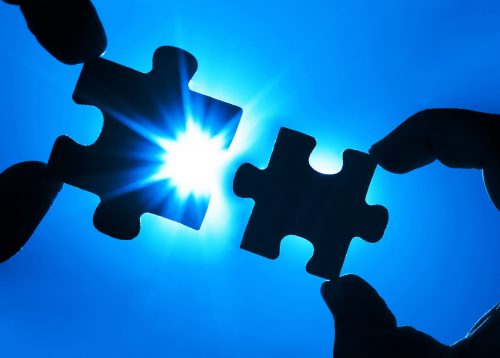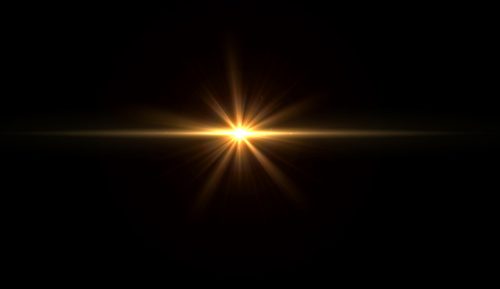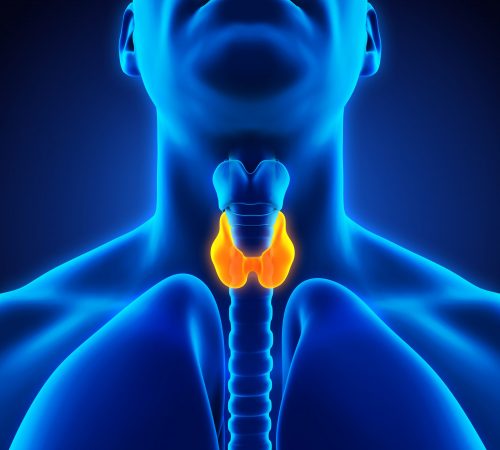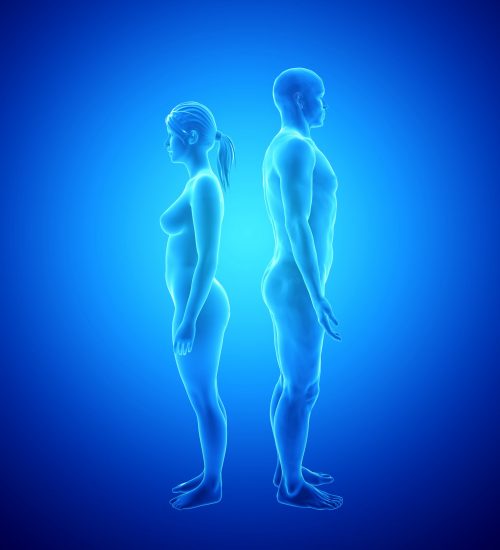The Benefits of Using HCG with TRT

In my professional opinion, HCG should always form part of your Testosterone Replacement Therapy (TRT) protocol. It helps to maintain fertility, testicular and penis size, cognitive function, and libido whilst on TRT. Additional benefits such as up-regulation of steroid hormones have also been purported, however there is not enough evidence at present to support this theory.
Opinion is currently divided amongst Endocrinologists regarding the benefit of HCG in TRT due to the traditional treatment model always having been testosterone monotherapy. Disappointingly we have had one NHS Endocrinologist recently state “Either the patient wants to retain fertility in which case you offer HCG, or they do not want to retain fertility in which case you treat with testosterone”. However, more recently we have had a referral from a Professor of Endocrinology who supports our work and already appreciates the benefit of HCG alongside testosterone due to to us sharing the care of a patient.
HCG is the acronym for Human Chorionic Gonadotropin, which is considered the female pregnancy hormone. HCG is produced by the placenta to help maintain pregnancy by supporting the ovarian corpus luteum which, in turn, helps maintains the endometrial lining of the uterus 1, it would therefore be reasonable to question what role HCG might have in TRT? HCG mimics Lutenising Hormone (LH). It’s a complicated mechanism that involves both gene expression and downstream steroid synthesis 2. The pituitary gland releases LH which stimulates the Leydig cells of the testes to produce testosterone.
The HCG molecule shares similarities with the LH molecule, however its structure is not chemically identical. The half-life of LH is only a few minutes 3. LH is released in response to stimulation from Gonadotropin Releasing Hormone (GnRH) from the Hypothalamus. As GnRH is released in a pulsatile manner 4, in order to replicate the release of LH, you would need to use an LH-analogue which would have to be injected multiple times per day to mimic the physiological release of LH from the brain. This is clearly impractical and unnecessary when HCG is a suitable alternative. Since the half-life of HCG is approximately 2 days 5, it allows us to effectively achieve stable blood levels with daily injections.
In traditional TRT, the use of exogenous testosterone suppresses the release of LH from the brain which subsequently results in infertility in the vast majority of men 6, 7. It is due to this action that testosterone monotherapy has been investigated as a potential male contraceptive 8. In order to appreciate the importance of HCG in TRT, you firstly need to understand the Hypo-Pituitary Gonadal (HPG) Axis and the role of LH within this axis and throughout the human body. The HPG axis works through a negative feedback mechanism that is constantly responding to not only oestrogen levels from aromatisation of testosterone to oestradiol, but to other neurophysiological factors. As already explained, LH is the primary pituitary hormone that stimulates the Leydig cells of the testes to produce testosterone. Therefore, the use of HCG helps to preserve some testicular function and subsequent production of intra-testicular testosterone. It would therefore seem logical to maintain function, rather than rely solely on exogenous testosterone to normalise your male androgen levels.
The premise behind TRT should be Hormone Replacement Therapy (HRT) and maintaining normal physiological processes. Testosterone monotherapy is a rather short-sighted and dogmatic approach to treating Testosterone Deficiency (TD) when we know other hormones are suppressed through treatment. TD is typically as a result of either a primary hypogonadism, which is an issue with the testes, or a secondary problem which indicates an issue with the brain. I previously discussed the various organic causes for this in The Men’s Health Clinic TRT Management Guidelines. There is also a tertiary cause for TD, which is a disproportionate amount of oestrogen that negatively influences the negative feedback loop. This further suppresses the release of LH and Follicle Stimulating Hormone (FSH) from the pituitary gland.
HCG is used to maximise natural intra-testicular production of testosterone through stimulation of the Leydig cells 9, it also allows the other physiological mechanisms within the testes to continue. Whilst spermatogenesis is primarily under the influence of FSH stimulating the Sertoli cells of the testis, intra-testicular testosterone and oestrogen are also integral to this process. Spermatogenesis is the process by which haploid spermatozoa are formed from germ cells. Testosterone helps maintain the blood-testis barrier which is necessary for maturation of the sperm and their subsequent release from the testis 10. Intra-testicular testosterone is converted to oestradiol by the aromatase enzyme, oestrogen exerts its effects by aiding germ cell proliferation, differentiation and the final maturation of spermatids, as well as germ cell survival and apoptosis 11.
Clinicians under-appreciate the complexities and importance of maintaining normal physiological function. It is obviously logical to treat TD with testosterone, however not appreciating the importance of addressing hormones that are directly affected from using exogenous testosterone, demonstrates a short-sightedness. Testosterone Replacement Therapy should be considered as Hormone Replacement Therapy.
The use of HCG alongside testosterone is supported by the American Urological Association 12 and its role in maintaining fertility whilst on testosterone is well documented in the literature 13, 14, 15, 16. In my own practice, we have now had 21 successful pregnancies reported by patients on TRT with HCG, two of which have had two successful conceptions.

It is worth keeping in mind that the positive effects of HCG in maintaining testicular functions is very dependent on the viability of the testes at the time of diagnosis. HCG is less likely to be as effective as a fertility aid if the patient has low testosterone as a result of a primary hypogonadism (an issue with the testes). However, reassuringly a primary hypogonadism rarely signifies complete testicular failure 17. Despite the science and extremely positive outcomes we have had from using HCG alongside TRT, there are no certainties in medicine and so if you are concerned about fertility whilst on TRT, I would recommend having a semen sample frozen as a precautionary measure.
Irrespective of whether your family is complete, or you do not wish to preserve fertility using HCG alongside TRT, HCG will help preserve testicular size and function 18. The direct and indirect influence of LH / HCG on the testis has a significant effect on the majority of the cells within the testis 19. This may seem like a purely aesthetic consideration, however testicular atrophy can cause significant discomfort and distress 20. I’m rather uncomfortable with the notion of allowing an organ to atrophy, it seems counter-intuitive. Homeostasis is a about maintaining physiological stability through feedback systems. If you remove a part of the jigsaw, you will never see the complete picture.
There are also other considerations outside of the obvious benefit in maintaining testicular function. There is evidence to suggest that HCG can maximise penis size 21. Whilst the study was conducted in men with a micro-penis, many of my patients report a fullness with HCG that they note decreases on cessation. Unfortunately it is not a dose dependent relationship and as the length of the penis is restricted by the suspensory ligament, you cant defy genetics! We also discussed earlier how HCG mimics LH. We know that LH receptors are found in numerous organs, most noticeably the brain 22, although the mechanisms by which LH / HCG exerts its effects is complex, most men will notice an improvement in cognition and libido.
Unfortunately, there is a very small proportion of men who do not tolerate HCG. Whether that be due to a disproportionate ratio of testosterone to oestradiol, or a negative effect on the Central Nervous System which manifests itself as anxiety, is unclear. Over 90% of my patients see the benefits of HCG alongside testosterone. I always recommend the use of HCG to all new patients, irrespective of the need to retain fertility, for the reasons discussed above. It’s often the difference between feeling good and feeling great.
Our emphasis is always on patient-centred care. TRT – Best Practice explains my rationalisation. I can’t emphasise enough how important it is to appreciate that all hormones are dependent, whether that relationship be direct or indirect. Our understanding and appreciation of that inter-relationship is ever evolving. Testosterone Replacement Therapy should be considered Hormone Replacement Therapy.
Benefits of HCG
- Improved Fertility
- Restores Testicular & Penis Size
- Improves Libido and Penis Sensitivity
- Possible Up-regulation of Steroid Hormones
For more information on HCG, please refer to our HCG Fact Sheet.
Dr Robert Stevens MBChB MRCGP Dip.FIPT
References
- Hill, M.A. (2021, January 11) Embryology Human Chorionic Gonadotropin. Retrieved from https://embryology.med.unsw.edu.au/embryology/index.php/Human_Chorionic_Gonadotropin
- Hill, M.A. (2021, January 11) Embryology Human Chorionic Gonadotropin. Retrieved from https://embryology.med.unsw.edu.au/embryology/index.php/Human_Chorionic_Gonadotropin
- Janet Choi, Johan Smitz, Luteinizing hormone and human chorionic gonadotropin: Origins of difference, Molecular and Cellular Endocrinology, Volume 383, Issues 1–2, 2014, Pages 203-213, ISSN 0303-7207, https://doi.org/10.1016/j.mce.2013.12.009
- Nedresky D, Singh G. Physiology, Luteinizing Hormone. [Updated 2020 Sep 30]. In: StatPearls [Internet]. Treasure Island (FL): StatPearls Publishing; 2020 Jan-. Available from: https://www.ncbi.nlm.nih.gov/books/NBK539692/
- Damewood MD, Shen W, Zacur HA, Schlaff WD, Rock JA, Wallach EE. Disappearance of exogenously administered human chorionic gonadotropin. Fertil Steril. 1989 Sep;52(3):398-400. doi: 10.1016/s0015-0282(16)60906-8. PMID: 2776893.
- Samuel J. Ohlander, Mark C. Lindgren, Larry I. Lipshultz, Testosterone and Male Infertility, Urologic Clinics of North America, Volume 43, Issue 2, 2016, Pages 195-202, ISSN 0094-0143, ISBN 9780323444835, https://doi.org/10.1016/j.ucl.2016.01.006
- https://www.thelancet.com/journals/lancet/article/PII0140-6736(90)92416-F/fulltext
- Gu Y, Liang X, Wu W, Liu M, Song S, Cheng L, Bo L, Xiong C, Wang X, Liu X, Peng L, Yao K. Multicenter contraceptive efficacy trial of injectable testosterone undecanoate in Chinese men. J Clin Endocrinol Metab. 2009 Jun;94(6):1910-5. doi: 10.1210/jc.2008-1846. Epub 2009 Mar 17. PMID: 19293262.
- Andrea D. Coviello, Alvin M. Matsumoto, William J. Bremner, Karen L. Herbst, John K. Amory, Bradley D. Anawalt, Paul R. Sutton, William W. Wright, Terry R. Brown, Xiaohua Yan, Barry R. Zirkin, Jonathan P. Jarow, Low-Dose Human Chorionic Gonadotropin Maintains Intratesticular Testosterone in Normal Men with Testosterone-Induced Gonadotropin Suppression, The Journal of Clinical Endocrinology & Metabolism, Volume 90, Issue 5, 1 May 2005, Pages 2595–2602, https://doi.org/10.1210/jc.2004-0802
- Patel AS, Leong JY, Ramos L, Ramasamy R. Testosterone Is a Contraceptive and Should Not Be Used in Men Who Desire Fertility. World J Mens Health. 2019 Jan;37(1):45-54. doi: 10.5534/wjmh.180036. Epub 2018 Oct 10. PMID: 30350483; PMCID: PMC6305868.
- Carreau S, Hess RA. Oestrogens and spermatogenesis. Philos Trans R Soc Lond B Biol Sci. 2010;365(1546):1517-1535. doi:10.1098/rstb.2009.0235
- American Urological Assocoiation – Evaluation and Management of Testosterone Deficiency (2018) – Published 2018. https://www.auanet.org/guidelines/testosterone-deficiency-guideline.
- https://www.healio.com/news/endocrinology/20190323/lowdose-hcg-can-prevent-sterility-in-men-prescribed-testosterone?fbclid=IwAR2dobCk14hFFy5pLqCxtDbiO5LxlKQUgbnukZwnxJVz7-Ym73Q7ai8RZb0
- Lee JA, Ramasamy R. Indications for the use of human chorionic gonadotropic hormone for the management of infertility in hypogonadal men. Transl Androl Urol. 2018 Jul;7(Suppl 3):S348-S352. doi: 10.21037/tau.2018.04.11. PMID: 30159241; PMCID: PMC6087849.
- Amr El Meliegy, Ahmad Motawi & Mohamed Ahmed Abd El Salam (2018) Systematic review of hormone replacement therapy in the infertile man, Arab Journal of Urology, 16:1, 140-147, DOI: 10.1016/j.aju.2017.11.011. https://doi.org/10.1016/j.aju.2017.11.011
- Lee JA, Ramasamy R. Indications for the use of human chorionic gonadotropic hormone for the management of infertility in hypogonadal men. Transl Androl Urol. 2018 Jul;7(Suppl 3):S348-S352. doi: 10.21037/tau.2018.04.11. PMID: 30159241; PMCID: PMC6087849.
- Behre HM, Bergmann M, Simoni M, et al. Primary Testicular Failure. [Updated 2015 Aug 30]. In: Feingold KR, Anawalt B, Boyce A, et al., editors. Endotext [Internet]. South Dartmouth (MA): MDText.com, Inc.; 2000-. Available from: https://www.ncbi.nlm.nih.gov/books/NBK279076/
- Habous M, Giona S, Tealab A, Aziz M, Williamson B, Nassar M, Abdelrahman Z, Remeah A, Abdelkader M, Binsaleh S, Muir G. Clomiphene citrate and human chorionic gonadotropin are both effective in restoring testosterone in hypogonadism: a short-course randomized study. BJU Int. 2018 Nov;122(5):889-897. doi: 10.1111/bju.14401. Epub 2018 Jun 14. PMID: 29772111.
- Fietz D., Bergmann M. (2017) Functional Anatomy and Histology of the Testis. In: Simoni M., Huhtaniemi I. (eds) Endocrinology of the Testis and Male Reproduction. Endocrinology. Springer, Cham. https://doi.org/10.1007/978-3-319-44441-3_9
- Leslie SW, Sajjad H, Siref LE. Chronic Testicular Pain. [Updated 2020 Jul 17]. In: StatPearls [Internet]. Treasure Island (FL): StatPearls Publishing; 2020 Jan-. Available from: https://www.ncbi.nlm.nih.gov/books/NBK482481
- Kim SO, Ryu KH, Hwang IS, Jung SI, Oh KJ, Park K. Penile growth in response to human chorionic gonadotropin (HCG) treatment in patients with idiopathic hypogonadotrophic hypogonadism. Chonnam Med J. 2011;47(1):39-42. doi:10.4068/cmj.2011.47.1.39
- Blair JA, Bhatta S, McGee H, Casadesus G. Luteinizing hormone: Evidence for direct action in the CNS. Horm Behav. 2015 Nov;76:57-62. doi: 10.1016/j.yhbeh.2015.06.020. Epub 2015 Jul 12. PMID: 26172857; PMCID: PMC4741372.


